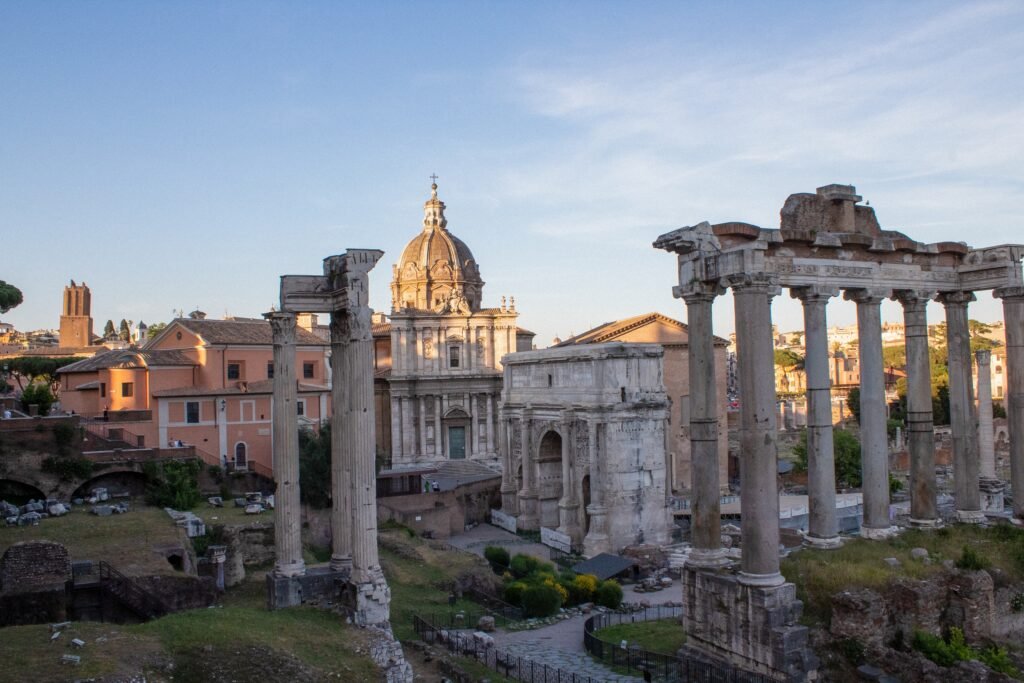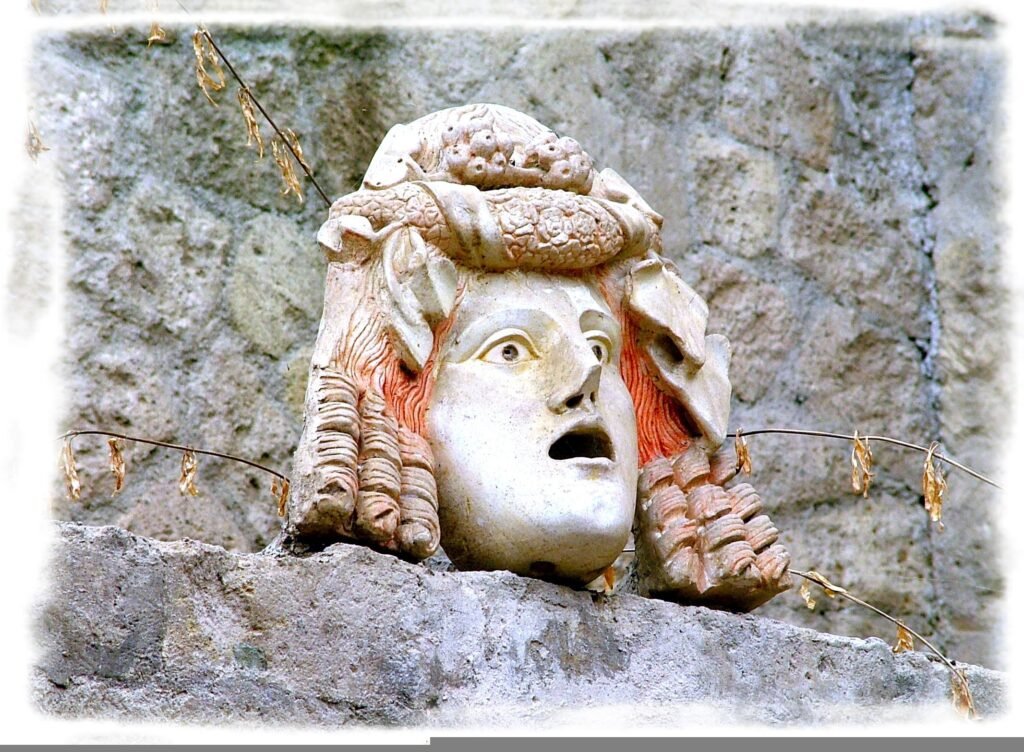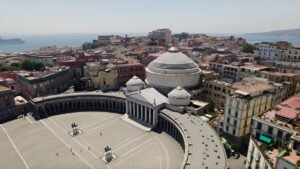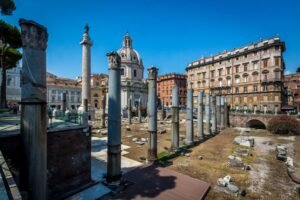10 Historical Landmarks wonders travel in Italy | discover the top picks

Historical Landmarks
Hello everyone, welcome to my new blog. Today i will discuss travel to italy with italy historical landmark and top attractions in Italy. I’m excited about traveling to this beautiful country that embraces all these: travel in italy!! From the ancient ruins to the Renaissance masterpieces and the natural wonders, you can find anything that your heart desires-.
- Colosseum (Rome)
- Roman Forum (Rome)
- Pantheon (Rome)
- Palatine Hill (Rome)
- Catacombs of San Sebastiano (Rome)
- Castel Sant’Angelo (Rome)
- Pompeii Archaeological Site (Naples)
- Herculaneum Ruins (Naples)
- Ostia Antica (Rome)
- Verona Arena (Verona)
Colosseum, Piazza del Colosseo, 1, Roma (Italy)
Address: Colosseum, Piazza del Colosseo, 1, Roma
The Colosseum was—and still is—colossal. The Colosseum is located in Rome, Italy. It’s a great example of ancient Roman engineering. It was begun in 70-72 AD during the reign of Emperor Vespasian when the Empire was nearing its peak. Using Roman-pioneered concrete, brick, and their trademark round arches, Romans constructed much larger buildings than the Greeks.
It stood 50 meters high and 156 meters wide, and it was constructed from concrete and sand. Arches and columns framed the structure and strengthened it. It had 80 exits and entrances, 76 of which were used by ordinary citizens. The Colosseum was also covered by a controllable velarium to shade spectators from the sun.
But, it seems, they still respected the fine points of Greek culture. They decorated their no-nonsense mega-structure with all three Greek orders of columns: Doric, Ionic, and Corinthian. Stepping inside, you can almost hear the roar of ancient Rome. Take a moment to imagine the place in action. Romans filled and emptied the Colosseum’s 50,000 seats as quickly and efficiently as we do our super stadiums today.
It’s built with two theaters facing each other—that’s what an amphitheater is—so twice as many people could enjoy the entertainment. Canvas awnings were hoisted over the stadium to provide protection from the sun. These passageways underneath the arena were covered by a wooden floor. Between acts, animals and gladiators were shuffled around out of sight.
Ancient Romans, whose taste for violence exceeded even modern America’s, came to the Colosseum to unwind. Gladiators, criminals, and wild animals fought to the death, providing the public with a festival of gore. To celebrate the Colosseum’s grand opening, Romans were treated to the slaughter of 5,000 animals.
Roman Forum, 00186 Rome, Metropolitan City of Rome Capital, Italy
Address: 00186 Rome, Metropolitan City of Rome Capital, Italy
In a nutshell, classical Rome lasted about a thousand years, roughly 500 BC to 500 AD. Rome grew for 500 years, peaked for 200 years, and fell for 300 years. The first half was the Republic, ruled by elected senators; the last half was the Empire, ruled by unelected emperors. In its glory days, the word “Rome” meant not just the city but what Romans considered the entire civilized world. Everyone was either Roman or barbarian. People who spoke Latin or Greek were considered civilized and part of the Empire. Everyone else was barbarian.
According to legend, Rome was founded by two brothers, Romulus and Remus, abandoned in the wild and suckled by a she-wolf. They grew up to establish the city. In actuality, the first Romans mixed and mingled here in the valley between the famous Seven Hills of Rome. This became the Roman Forum.
In 509 BC, they tossed out their king and established the relatively democratic Roman Republic. That began perhaps history’s greatest success story: the rise of Rome. From the start, Romans were expert builders, and they had a knack for effective government. This simple brick building was once richly veneered with marble and fronted by a grand portico. It’s the Curia. The Senate met here and set the legal standards that still guide Western civilization.
The reign of Julius Caesar, who ruled around the time of Christ, marked the turning point between the Republic and the Empire. The Republic, designed to rule a small city-state, found itself trying to rule most of Europe. Something new and stronger was needed. Caesar established a no-nonsense, more disciplined government, became dictator for life, and, for good measure, had a month named in his honor: July.
The powerful elites of the Republic found all this change just too radical. In an attempt to save the Republic and their political power, a faction of Roman senators assassinated Caesar. His body was burned on this spot in 44 BC.
The citizens of Rome gathered here, in the heart of the Forum, to hear Mark Antony say, in Shakespeare’s words, “Friends, Romans, countrymen, lend me your ears. I’ve come to bury Caesar, not to praise him.” But the Republic was finished, and Rome became the grand capital of a grand empire.
The Via Sacra, or Sacred Way, was the main street of ancient Rome. It stretched from the Arch of Septimius Severus to the Arch of Titus. Rome’s various triumphal arches, named after the emperors who built them, functioned as public relations tools. Reliefs decorating the various arches show how war and expansion were the business of state. Rome’s thriving economy was fueled by plunder and slaves won in distant wars.
Pantheon, Piazza della Rotonda, 00186 Roma RM, Italy
Address: Piazza della Rotonda, 00186 Roma RM, Italy
Throughout the ages, people mined once-glorious buildings as quarries. Imagine—they were stacked with pre-cut stones, free for the taking. Block by block, they carted away most of this temple and then incorporated what was still standing, like these columns, into a modern building. Thankfully, no one cannibalized the magnificent Pantheon, the best-preserved temple from ancient Rome. The portico, with its stately pediment, has symbolized Roman greatness ever since antiquity. Like the obelisks, its massive pink granite columns were shipped from Egypt. They’re huge—it takes four tourists to hug one.
Step inside to enjoy the finest look anywhere at the splendor of ancient Rome. Its dimensions are classic, based on a perfect circle: as wide as it is tall—140 feet. The oculus is the only source of light. The Pantheon has survived so well because it’s been in continuous use for over 2,000 years. It went almost directly from being a pagan temple to being a Christian church.
The beauty of the Pantheon and the brilliance of its construction have inspired architects through the ages. The dome is made of poured concrete, which gets thinner and lighter with height. The highest part is made with pumice, a volcanic stone. Pantheon means “all the gods.” It was a spiritual menagerie where the many gods of the empire were worshiped.
Palatine Hill, 00186 Rome, Metropolitan City of Rome Capital, Italy
Address: 00186 Rome, Metropolitan City of Rome Capital, Italy
The city of Seven Hills has one that stands out above all others: the Palatine. Located just across from the Colosseum, it was the ancient neighborhood of some of Rome’s most infamous characters. This was ancient Rome’s version of the Hollywood Hills. Everybody who was anybody had a pad up here. I happen to be standing in the old house of Caesar Augustus. Could you imagine rolling out of bed and getting that view? That would be like me rolling out of bed and seeing the Hollywood sign. I wonder if Augustus ever knew that a guy like me would crash his place.
There’s even a theory that dates back to Rome’s earliest days that this spot above the Circus Maximus, with the River Tiber just beyond, was the birthplace of the city’s namesake. In what historians call the Casa Romuli, you know, the more things change, the more they stay the same. The first people to ever settle in Rome also chose the Palatine, overlooking the Tiber River. So, a good piece of real estate has always been a good piece of real estate.
Over my shoulder here, a couple of stone huts have been unearthed by archaeologists. By comparing their location to ancient writings, they’ve figured out that there’s a very good chance these actual huts were the home of Romulus. So this is where it all began: Rome, Metropolitan City of Rome Capital, Italy.
Residents up on Palatine Hill were able to escape the smell and squalor of the city, living in huge luxurious homes with spectacular views in every direction. In fact, our word “palace” comes from the ancient Roman mansions built up here on the Palatine.
One of those palaces is the Domus Flavia, the major archaeological feature here. It was constructed by Emperor Domitian in 96 AD and was the largest home ever occupied by an emperor. But living in the best and the biggest didn’t translate to happiness for this particular resident.
All the glitz, glamour, and privilege that came with having an address on the Palatine—and a view like that—came at a price. They tell a story of Emperor Domitian, who was so paranoid that he had high-gloss marble installed throughout his gardens so he could see an assassin coming from behind him if necessary. It didn’t work. His servants got him here in the manner preferred by Roman assassins: knives. Ouch. A fate all too common for Roman emperors. Hard to take a relaxing stroll with that kind of thing on your mind.
But for visitors, a relaxing afternoon is exactly what you can expect. Palatine Hill is an essential Roman experience and the perfect opportunity for anyone looking to soak in the atmosphere and learn about ancient Rome.
Remember, your entrance fee to Palatine Hill is included in your Colosseum ticket. You have two days to use them and visit both places, so this is a great place to come and just spend an afternoon. Grab a sandwich, sit on a bench, and relax—it’s a beautiful park.
Catacombs of San Sebastiano, Via Appia Antica, 136, 00179 Roma RM, Italy
Address: Via Appia Antica, 136, 00179 Roma RM, Italy
The catacombs are underground structures generally built as cemeteries or burial places that hold notable importance in archaeology and history. The term catacomb comes from the Latin catacumba, which refers to a series of tombs located underground on the outskirts of cities.
Especially in ancient Rome, these underground galleries began to be used approximately in the second century AD. This coincided with the time when the first Christians needed spaces to bury their dead in a safe and respectful manner, given that Christianity was often not officially accepted and was persecuted.
The catacombs represent not only a place of eternal rest but also a symbol of resistance and devotion. Architecturally, the catacombs are a labyrinthine network of channels carved into stone, often volcanic rock, which is easier to excavate yet solid enough to support structures on the surface.
These tunnels can have several levels and sometimes even span kilometers, showcasing the engineering skill and ingenuity of ancient civilizations. The spaces were organized into niches called loculi, where bodies were placed. Larger spaces or cubicles were often included, serving as areas for ceremonies and religious meetings.
The most fascinating aspect of the catacombs is that they functioned not only as burial places but also as places of worship and refuge. Biblical scenes, inscriptions, and Christian symbols adorn the walls, offering a unique window into the past and echoing the practices and beliefs of that era.
The study of the catacombs provides invaluable information on funerary customs, early Christian art, and the first Christian communities. Today, the most famous catacombs are open to tourists and are the subject of intensive archaeological studies, offering an extraordinary connection to the past.
Among the most visited are the Catacombs of San Callisto and the Catacombs of San Sebastian in Rome, as well as the Catacombs of Paris, which offer a different and particularly enigmatic view of the underground world.
These structures are important not only from a religious and cultural perspective but also as authentic historical treasures waiting to be explored.
Castel Sant'Angelo, Lungotevere Castello, 50, 00193 Roma RM, Italy
Address: Lungotevere Castello, 50, 00193 Roma RM, Italy
Castel Sant’Angelo was first built as a grand tomb for the Roman Emperor Hadrian around 140 AD. The name means “Castle of the Holy Angel” because people believed that an angel appeared on its roof to stop a deadly plague. The castle later became a strong fort where the pope could hide during dangerous times.
The castle is round and stands next to the Tiber River in Rome. It is a very famous landmark. Although Michelangelo didn’t design the castle, he worked nearby at St. Peter’s Basilica. Over the years, the castle was connected to Vatican City by a secret passageway.
The castle was also used as a prison for many important people. Those sentenced to death were sometimes executed inside the castle. Because of its strength, the castle served as a military fort during wars. Some popes lived in the castle when it was too dangerous to stay in the Vatican.
Today, the castle is a museum filled with art and historical objects. The top of the castle offers amazing views of Rome, attracting many tourists.
A large statue of the Archangel Michael stands atop the castle. Castel Sant’Angelo has appeared in books, movies, and even in the opera Tosca. The castle has survived many floods from the nearby Tiber River. There is also a secret walkway called the Passetto di Borgo, which connects the castle to the Vatican. This walkway was used by popes to escape during attacks.
Pompeii Archaeological Site, 80045 Pompei, Metropolitan City of Naples, Italy
Address: 80045 Pompei, Metropolitan City of Naples, Italy
Archaeologists have begun a major new excavation of the Roman city of Pompeii, which was destroyed nearly 2,000 years ago after Mount Vesuvius erupted. Our Science Editor Rebecca Morale reports. With Vesuvius looming over it, Pompeii is a Roman city perfectly preserved exactly as it was on the day of the violent eruption 2,000 years ago.
But now, new secrets are being unearthed in Pompeii’s biggest excavation in a generation. Layer by layer, archaeologists are revealing a new snapshot of how Romans lived and died.
This is one of the main streets of Pompeii. It would have been a hive of activity. Let me take you through this entrance into one of the newly excavated areas.
This is an atrium, the heart of the building, with a series of rooms running off to each side. At its center would have been a fountain gently splashing. And you can see here the beautifully preserved white mosaic floor. The plumbing looks as if it could have been installed just yesterday.
This room, where two beds were standing, is a bedroom just off the atrium and was the scene of an intense fire. These charred remains are all that’s left, a relic of the chaos and panic that ensued from the eruption.
“It really was, you know, hell on Earth. We have the eruption, of course—the hot ash arriving, earthquakes.” The team thinks the fire might have been started by a lamp knocked over by people trying to flee. In terms of the eruption, their fate is unknown. It would be interesting to understand who didn’t make it—were they the poor, or maybe people with property who stayed to protect what they had, while others with nothing just took off?
Discoveries keep emerging, from an unusual shrine adorned with snakes where people left offerings of food, to piles of roof tiles left exactly as they were, suggesting a room that was mid-renovation.
This was a building where people lived and worked. The team here is trying to work out what the different rooms were used for. One room is pretty obvious though—it’s an oven, similar to those you’d see in Naples today, but too large to be inside a home. This was most likely a wholesale bakery, making bread for the people of Pompeii.
It was something like this on the menu—possibly pizza, found in a recently revealed fresco. But there have also been some more morbid discoveries: three skeletons found buried under rubble. The moment was captured by a documentary crew for the BBC’s three-part series on Pompeii’s new dig.
The bones are extremely fragile, and they’ve been taken to the on-site lab for closer examination. “We have two women, probably, and a child, totally destroyed by the collapse of the roof.” These bones bear the scars of the horror from what started as a normal day.
Pompeii is a city full of horrible stories—for the people, not for the houses, frescoes, or objects. We’re starting to study the reconstruction of the stories of these people to give them new memories. Only in Pompeii can we see the lives of the Roman people.
This excavation has already yielded some incredible new treasures after only a few months, but this is just the beginning. A third of Pompeii still lies buried beneath the volcanic soil. There are many stories left to tell about this lost Roman world.
Herculaneum Ruins, Corso Resina, 187, 80056 Ercolano Naples, Italy

Address: Corso Resina, 187, 80056 Ercolano Naples, Italy
Let’s start with another destination. Now, we are in the ancient city of Herculaneum, destroyed by the eruption of Vesuvius in 79 A.D. An incredible resort town of about 4,000 people, similar to Positano. Let’s go see what it’s all about. Andiamo!
Herculaneum is about a 25-minute train ride from Napoli Central by taking the Circumvesuviana. In my opinion, it is an amazing hidden gem that’s even more fascinating than Pompeii. It’s closer to Naples, on a much smaller scale, and definitely worth a visit when you come to the area of Naples and the Amalfi Coast.
Although Herculaneum was discovered even before Pompeii, it was covered by roughly five times the amount of ash that Pompeii was, making it much more difficult to excavate. Here, we have our fabulous guide, Francesca, explaining the history of the city and its destruction as we gaze over the incredible ruins.
There are many things that make Herculaneum unique, including the fact that many of the upper levels of the homes survived. Because of the way it was buried, there was an almost vacuum-sealed effect, which helped preserve the magnificent frescoes and mosaics.
Ample water was always important, which would have been useful at the presumed blacksmith’s shop that Francesca is showing us. We enter a building and see a pluvium, indicating that we’ve just arrived at a true domus—a Roman house.
The House of the Bicentennial is a true privilege to see, as it has been closed since 1983 and only just reopened. Found in the center of the city, it had three floors and over 600 meters of floor space. The richness of the frescoes speaks for themselves. Have a drink of water and be greeted by Bathing Venus, with water coming right out of a shell for its spout.
The Carginae Street runs from north to south, and you can really get a feel for what this small resort town must have been like. The House of Neptune and Amphitrite is one of my favorite places, due to the beautiful mosaics of the gods inside. Truly magnificent, and probably one of the most famous treasures of Herculaneum. The brightness and intensity of the tesserae that make up the image almost seem as if they were created just yesterday.
There are several homes we can visit, with structures seemingly similar—welcoming atriums with pluvium to gather water and gorgeous courtyards surrounded by rooms. Back to the main street, the art should lead to the forum and other civic buildings, but they’ve yet to be dug up.
With the reclining river god being depicted, one gets the idea that the sea is a recurring theme in this vacation spot of the ancient world. The College of the Augustales is one of the few civic buildings we can see in Herculaneum. It could be dedicated to the imperial cult or a senate house. What we do know is that there are wonderful frescoes here in the fourth style, depicting the life of Hercules.
It was also here where they discovered the body of a man whose brain had turned to glass from the extreme heat that destroyed the city.
Now, off to the baths of the city. This is a hippocaust system, a sort of indoor heating under the raised floor, which also explains why the marvelous maritime mosaics are buckling quite a bit.
Ostia Antica, Rome, Metropolitan City of Rome Capital, Italy
Address: Rome, Metropolitan City of Rome Capital, Italy
Ancient Rome was located about 20 miles from the sea. Although barges could be towed up the Tiber to the city, it was difficult for large ships to make the journey, especially when summer droughts diminished the current. As a result, virtually all of the thousands of ships that carried grain, olive oil, wine, and other trade goods into Rome had to dock in or near Ostia, at the Tiber’s mouth.
Initially, a small fortified settlement, Ostia grew into a thriving city of nearly 50,000 inhabitants during the early Imperial era, when the Emperors constructed a large artificial harbor to accommodate the rising tide of imports from the provinces.
Most of Ostia’s buildings date to the late first and early second centuries, when the new port and a thriving economy motivated a series of massive construction projects, some paid for by the Emperors themselves. Although Ostia never had a monumental center to rival those of other great ports like Puteoli or Carthage, it was equipped with impressive public buildings, such as the Baths of Neptune, rebuilt like much of the city under Hadrian.
The baths are famous for their well-preserved mosaic floors, which depict Neptune with a host of sea creatures. Equally impressive in their own right are Ostia’s horea, large brick warehouses with central courtyards designed to store goods awaiting shipment down the Tiber to Rome.
The centrality of commerce at Ostia is even more visible at the Piazza delle Corporazioni, a plaza lined by porticos that sheltered the offices of merchant and shipbuilding associations from across the empire. Black-and-white mosaics advertise the services offered by these associations, which included importing everything from African ivory to Spanish garum.
The most remarkable ruins in Ostia are the insulae that line many streets. These apartment buildings, often four or five stories tall, owe their preservation to the soured brick-faced concrete of their walls. The ground floors of many insulae were leased to restaurants or taverns, such as this example, which still features the marble counter at which customers were served.
The best apartments in an insula were typically on the second floor, close enough to the ground to have private latrines and easy street access. These luxury units might be decorated with elegant frescoes and mosaics. Apartments on higher floors tended to be small and austere.
As Ostia’s population fell in late antiquity, many of the apartment buildings along the now quiet streets were converted into sprawling second homes by Roman aristocrats. With their towering insulae, the streets of Ostia offer a glimpse into the lost neighborhoods of Rome, but they have a character all their own—a sense of a bustling and cosmopolitan port city that fell silent 15 centuries ago.
Unlike Pompeii, with which it is often compared, Ostia is almost never crowded. It’s still possible to wander the site undisturbed and follow overgrown paths to hidden treasures.
Be sure to check out the linked video in which I discuss two famous Roman coins that show the city’s port. Stay tuned on this channel for more Roman sites, and as always, thanks for watching.
Verona Arena, P.za Brà, 1, 37121 Verona VR, Italy
Address: P.za Brà, 1, 37121 Verona VR, Italy
The Arena, or Roman amphitheater, is undoubtedly the most iconic image of Verona, recognized worldwide. The entire city revolves around this landmark, located in the city’s largest piazza, Piazza Bra.
The Arena was built 2,000 years ago, in the middle of the 1st century AD, and could accommodate 30,000 spectators, making it the third-largest amphitheater in Italy, after the Colosseum and the amphitheater of Capua.
The exterior part of the Arena visible today is actually the inner section of the original building. The larger outer ring of the structure, which once showcased a stunning 30-meter-high facade divided into three orders, is now missing. The only section of the outer ring still visible is a small portion called “Wing.” This missing part collapsed after a major earthquake in 1117.
The second ring, which has become the primary one, consists of a harmonious sequence of 72 story arches that lead to the arena. These arches were once artificial caves used as dwellings or workshops until 1820.
After passing through the ticket office and climbing the steep stairs, you are greeted by the breathtaking marble crater, which opens up to a vista of 43 concentric steps. On the main axis, there are two main entrances: one for the entry of gladiators and the other for the exit of injured or killed contestants.
The Arena was originally conceived by the Romans to host bloody battles between gladiators and wild animal fights. Over its 2,000-year history, the arena has remained a venue for competitions. Since 1913, thanks to its exceptional acoustics that allow actors and singers to be heard without microphones, the Arena has been home to the famous Arena Season, featuring extraordinary operatic performances.
With audiences from all over the world, the arena continues to host spectacular events. Its harmonious presence blends perfectly with the city of Verona, and those fortunate enough to visit this beautiful city can truly feel this communion.
Ready yourself with all the prized possessions packed to enjoy the adventure of a lifetime! Travel to Italy with historical landmarks. You just finished blogging; your Italian adventure is waiting. Like this Italian journey? any place miss my blog leave comment and write your decision.
You can find me on Instagram: @dreamytravelersofficial/.








